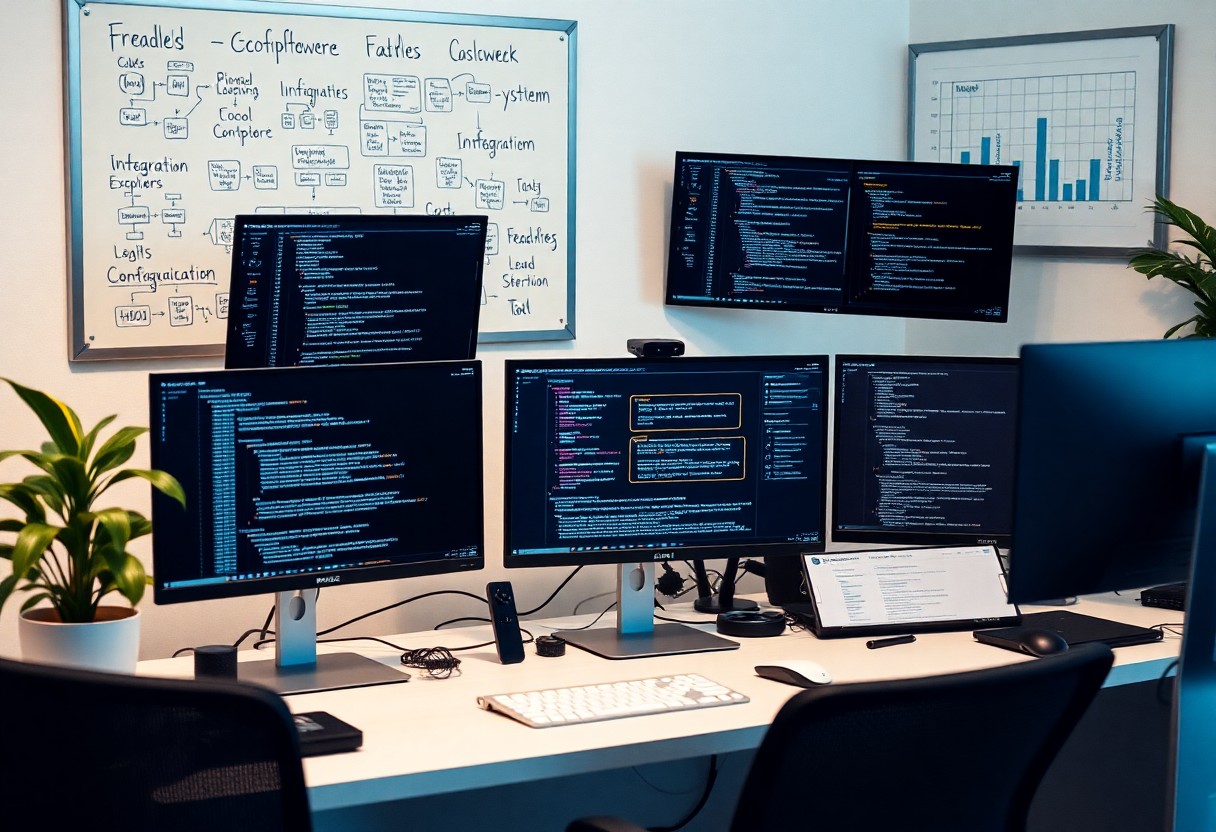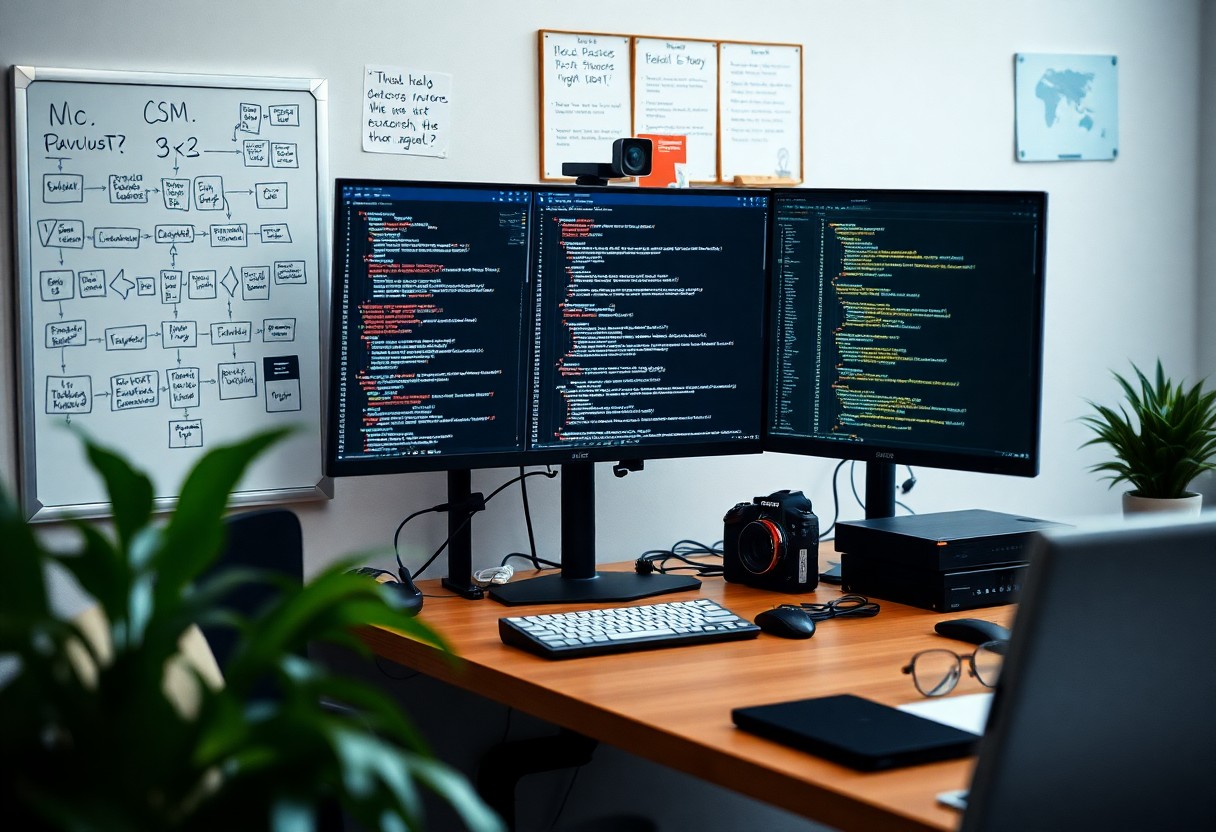Most developers and businesses today are embracing headless CMS architecture to create flexible and scalable digital experiences. In this ultimate guide, you will discover the ins and outs of headless CMS, including its benefits, components, and best practices for implementation. Whether you’re looking to enhance your content delivery or streamline your development process, understanding headless CMS will empower you to make informed decisions for your projects. Dive in to leverage the full potential of this modern approach to content management.
The Architectural Framework of Headless CMS
The architectural framework of a headless CMS is designed to enhance content management by emphasizing a clear separation between the content repository and its presentation layer. This decoupled structure allows developers to choose their preferred frontend technologies without being restricted by the backend, resulting in greater flexibility and efficiency in delivering content across multiple platforms and devices.
Decoupled Components: The Backend and Frontend Relationship
In a headless CMS, the backend handles content storage and management independently from the frontend, which is responsible for delivering that content visually. This separation means you can update, edit, or publish content in the backend without affecting how users perceive it on the frontend, enabling you to create a seamless experience across numerous channels.
API-First Approach: Leveraging Flexibility and Scalability
The API-first approach integral to headless CMS architecture allows you to interact with your content seamlessly across platforms. By exposing content through APIs, developers can build applications tailored to specific user experiences, regardless of the device or audience. This model also supports rapid scalability, enabling you to support growing traffic demands without significant infrastructure changes.
With an API-first approach, you can leverage the full potential of your content. For instance, if you decide to reallocate resources to a mobile application or a new web platform, the headless CMS allows you to do so without overhauling your system. Companies like Spotify utilize a headless CMS to serve their content dynamically across various devices, illustrating how this architecture empowers brands to innovate quickly while maintaining a unified content strategy. Furthermore, studies show that teams using an API-first design can reduce development time by up to 30%, facilitating faster time-to-market for new features and enhancements.
The Competitive Edge: Advantages of Headless CMS
Utilizing a headless CMS provides a significant competitive advantage in today’s digital landscape. You gain flexibility in how content is presented, allowing for tailored experiences that resonate with various audiences. With separation of the backend from the frontend, teams can innovate rapidly and adapt to emerging trends without being held back by traditional CMS limitations. This agility can lead to faster deployment of new features, improved collaboration among design and development teams, and ultimately, enhanced customer satisfaction.
Enhanced User Experience Through Customization
Your ability to customize user experiences is amplified with a headless CMS. You can develop unique interfaces for different platforms, ensuring consistency across web, mobile, and other digital touchpoints. By deploying personalized content based on user behavior, preferences, and demographics, you create more engaging interactions that drive retention and conversion rates.
Accelerated Content Delivery in a Multi-Channel World
Headless CMS architecture empowers you to distribute content across multiple channels seamlessly. By utilizing APIs, content can be delivered quickly to websites, mobile apps, IoT devices, and social media platforms without duplication of effort. This ensures that your content strategy is unified and efficient, reaching a broad audience in real-time.
Consider that 80% of consumers expect a seamless experience across channels. With a headless CMS, you meet this demand by allowing content to be repurposed and adapted effortlessly for specific platforms. For instance, you can push an article to your website while simultaneously delivering a summarized version to your mobile app, ensuring that users receive relevant information in a format optimized for their device. This approach not only enhances user satisfaction but also strengthens your brand presence across the digital spectrum.

Navigating the Integration Landscape
Your headless CMS operates in a broader ecosystem that often requires seamless integration with various tools and platforms. Understanding the capabilities and limitations of your chosen headless CMS is imperative in selecting the best integration partners. Different headless CMS platforms may have unique strengths in API support, making it vital to ensure that the integrations you pursue align with your architectural needs, marketing objectives, and technology stack.
Overcoming Challenges with Third-Party Integrations
Integrating third-party solutions can pose challenges, such as compatibility issues or data synchronization difficulties. You might encounter limitations in terms of documentation or community support, making it tough to implement certain features. Evaluating each integration’s functionality and testing thoroughly before deployment can mitigate these challenges. Prioritize establishing communication with support teams from third-party vendors to clarify integration processes and reduce headaches during implementation.
Building Connections: Essential Tools and Technologies
Utilizing the right tools is instrumental in making the most of your headless CMS integrations. Technologies like RESTful APIs, GraphQL, and webhooks play a pivotal role in creating flexible and efficient connections with external services. For instance, tools like Zapier can automate workflows between your headless CMS and other applications, while CI/CD pipelines ensure smooth deployment and integration processes. Building your tech stack around these imperative tools enhances interoperability, enabling a more streamlined user experience and increased productivity.
Emphasizing technologies like SDKs (Software Development Kits) can further simplify the integration landscape. For example, platforms such as Contentful and Strapi offer rich SDKs that allow developers to create custom functionalities easily. This flexibility minimizes development time and effort while maximizing the potential of your headless CMS. Additionally, employing analytics tools can help you monitor how well your integrations are performing, ensuring that your digital architecture supports your strategic goals effectively.
Real-World Applications: Success Stories of Headless CMS
Numerous organizations have realized remarkable success by implementing headless CMS solutions. Brands like Nike, which dynamically deliver personalized content to users across different platforms, demonstrate how headless architecture enhances customer experiences. Similarly, The Economist utilizes a headless setup to serve tailored articles and ads to specific reader segments, significantly boosting engagement. These examples illustrate how adopting this architecture not only streamlines content management but also creates a more flexible and efficient digital strategy.
Transformational Use Cases Across Industries
Headless CMS adoption spans various sectors, from retail to education. For instance, automotive companies have harnessed this model to manage web and mobile platforms, allowing for consistent and timely updates to vehicle information and promotions. Similarly, educational institutions leverage headless CMS for delivering content across different learning management systems, ensuring students receive up-to-date resources without delays. This flexibility allows companies to respond swiftly to market demands while maintaining a cohesive brand presence.
Lessons Learned from Leading Brands
Leading brands have derived several key insights from their headless CMS implementations. First, prioritizing an omnichannel strategy enables the delivery of cohesive brand experiences. Second, investing in developer-friendly APIs is critical for ensuring smooth integrations with existing tools. Lastly, ongoing training for content teams is imperative to maximize the potential of new technology, fostering a culture of agility and innovation.
Specifically, companies like Nike and Airbnb emphasize the importance of scalability in their strategies. They found that shifting to a headless CMS not only prepared them for future growth but also enhanced their ability to adapt to emerging technologies quickly. By focusing on collaborative workflows that combine content strategy with user experience, they have effectively minimized bottlenecks, leading to faster project rollouts and increased overall efficiency. These lessons highlight the strategic benefits of thoughtful implementation and the value of embracing change within your organization.
Look Ahead: The Future of Content Management and Headless CMS
As digital landscapes evolve, headless CMS platforms are poised to redefine how businesses manage and deliver content. Future advancements will likely focus on enhancing customization, scalability, and real-time adaptability to meet diverse consumer needs. Companies that integrate headless architectures will be better prepared to leverage emerging technologies and trends, ensuring their content remains relevant and engaging across all channels.
Trends Shaping the Landscape of Digital Experiences
The trend of personalization is dominating digital experiences, compelling businesses to tailor content to individual user preferences. As customer expectations grow, organizations are increasingly employing headless CMS solutions to facilitate multi-channel distribution and dynamic content creation, driving higher engagement and satisfaction rates. Integrating new technologies, such as augmented reality and voice search, will further shape interactive and immersive digital environments.
The Role of AI and Automation in Headless Architectures
AI and automation are becoming vital components in headless CMS ecosystems, streamlining workflows and improving content curation. With tools like natural language processing and machine learning, your system can analyze user behavior and content performance, enabling real-time adjustments that enhance user experience. This proactive approach can lead to higher conversion rates and more effective targeting across different user segments.
Incorporating AI-driven insights into your headless CMS can significantly impact your content strategy. For instance, automated content generation tools can create personalized recommendations based on user data, ensuring relevancy. Real-world examples illustrate how companies leverage automation to improve customer engagement; Netflix employs sophisticated algorithms to suggest shows based on viewer history, elevating user satisfaction and retention. By embracing these technologies in your content management, you’re equipped to stay competitive in an increasingly dynamic digital landscape.
Final Words
Ultimately, adopting a headless CMS architecture can significantly enhance your digital content strategy by offering flexibility, scalability, and improved user experiences. As you explore this innovative approach, focus on understanding your specific needs and selecting the right tools to optimize your workflow. By leveraging the strengths of a headless CMS, you can ensure your content is easily adaptable across various platforms, helping you to stay ahead in an ever-evolving digital landscape.




